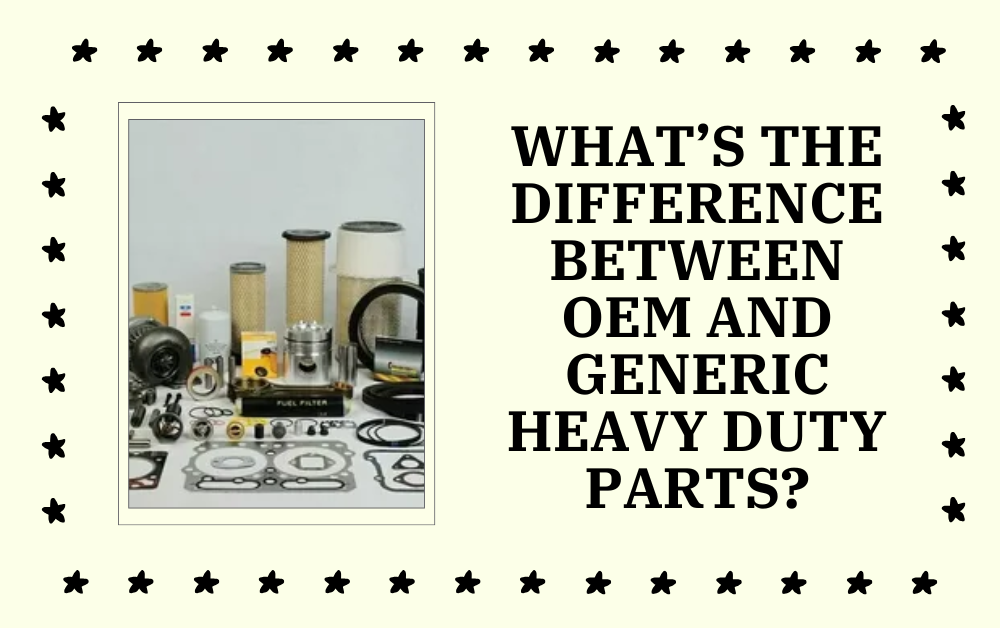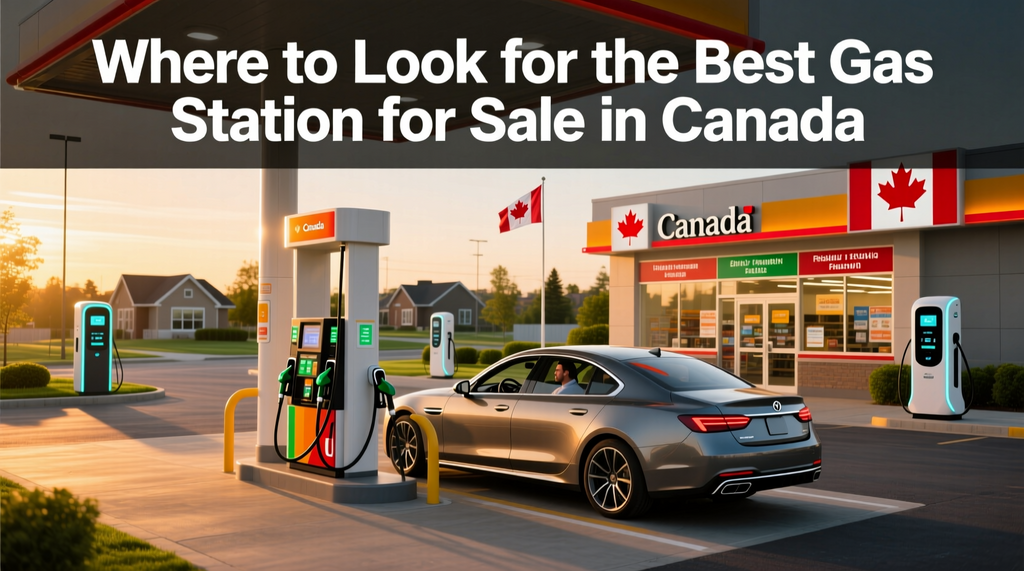What’s the Difference Between OEM and Generic Heavy Duty Parts?

In the world of heavy-duty equipment—whether it’s construction machinery, trucks, or industrial systems—reliable performance depends largely on the quality of spare parts used. Choosing between OEM (Original Equipment Manufacturer) and generic parts can often be a confusing decision for operators, mechanics, and business owners. Each option comes with its own advantages, limitations, and long-term implications for maintenance, cost, and performance.
This article explores in depth the difference between OEM and generic heavy-duty parts, helping you make an informed decision that ensures durability, safety, and value for money.
Understanding OEM Heavy Duty Parts
OEM heavy-duty parts are components that are made by the same manufacturer that produced the original equipment. These parts are designed, engineered, and tested to meet the exact specifications of the machine they are intended for.
For instance, if you own a Caterpillar loader, an OEM part would be one manufactured by Caterpillar or a company authorized by them to produce that part.
Precision and Compatibility
OEM parts are built using the same blueprints and materials as the original machinery components. This means they are guaranteed to fit perfectly and function seamlessly without any modification.
The precision in manufacturing eliminates compatibility issues that might arise with generic or aftermarket alternatives.
Quality Control and Testing
Another key feature of OEM parts is the stringent quality control process they undergo. These parts are subjected to rigorous testing and verification procedures to ensure compliance with industry standards.
Because OEM manufacturers have a direct reputation to maintain, they invest heavily in material quality, performance testing, and product reliability.
Warranty and After-Sales Support
OEM heavy-duty parts often come with a manufacturer’s warranty. This warranty not only assures product reliability but also provides peace of mind in the event of premature failure. Additionally, OEM suppliers typically offer strong after-sales service, technical assistance, and documentation support—something that may not always be available with generic parts.
NOTE:- The market for OEM heavy duty spare parts in Dubai had been transformed by Sintra’s commitment to excellence. Their parts had ensured higher performance and reduced downtime in heavy machinery. Get in touch with Sintra now to source trusted OEM spare parts for your industrial equipment.
What Are Generic Heavy Duty Parts?
Generic heavy-duty parts, sometimes referred to as aftermarket parts, are manufactured by third-party companies that are not directly affiliated with the original equipment manufacturer. These companies produce compatible parts based on general specifications rather than exact original blueprints.
Generic parts are widely available in the market and often cost significantly less than OEM components. They are commonly used in industries where cost efficiency and availability are prioritized.
Affordability and Accessibility
The most notable advantage of generic parts is their lower cost. Because third-party manufacturers do not have the same overhead costs as OEMs, they can offer parts at a more competitive price.
For large fleets or companies that perform frequent maintenance, this cost difference can lead to significant savings.
Broad Availability
Generic heavy-duty parts are often more readily available than OEM ones. Independent distributors and aftermarket suppliers stock a wide range of compatible components that can fit multiple machine models. This accessibility is crucial in minimizing downtime for businesses that cannot afford to halt operations while waiting for a specific OEM part to be shipped.
Varied Quality Levels
The quality of generic parts can vary dramatically depending on the manufacturer. Some reputable aftermarket companies produce high-quality components that perform nearly as well as OEM parts. However, lower-grade manufacturers might cut corners on materials, design, or testing, which can compromise performance and longevity.
Key Differences Between OEM and Generic Heavy Duty Parts
While both OEM and generic parts aim to restore equipment functionality, they differ across several important dimensions. Understanding these distinctions can help you choose the most appropriate type for your operation.
Manufacturing Standards
OEM parts are produced under strict factory specifications that mirror the standards of the original machinery. Generic parts, on the other hand, are built by third-party manufacturers who may follow general guidelines without adhering to the exact engineering standards.
As a result, OEM parts are often more consistent in quality and performance, whereas generic parts can differ based on the manufacturer’s credibility.
Fit and Compatibility
Since OEM parts are exact replicas of original components, fitment is guaranteed. You can install them without any adjustment or modification.
Generic parts, however, might require slight adjustments or additional fittings, especially when used across different equipment models. This can lead to extended installation time or minor operational inefficiencies.
Cost Considerations
Cost is often the deciding factor for many operators. OEM parts are generally more expensive, sometimes costing 30–50% more than their generic counterparts.
Generic parts offer savings upfront, but if a lower-quality part fails prematurely, the resulting repair costs and downtime may outweigh the initial savings.
Durability and Performance
Durability is where OEM parts usually outperform generic ones. Since they are designed using specific materials and engineering standards, they tend to last longer and handle demanding conditions better.
Generic parts may perform adequately in light-duty or non-critical applications but might wear out faster under high-stress conditions.
Warranty and Reliability
OEM parts come with a manufacturer-backed warranty, which is an assurance of quality and reliability. Generic parts may come with limited or no warranty at all, depending on the supplier.
This distinction is particularly significant for businesses that rely on warranty coverage to minimize operational risks.
Supply and Lead Time
In some cases, OEM parts might have longer lead times, especially for older equipment models or specialized components. Generic parts often fill this gap by being readily available through local suppliers, allowing quicker turnaround for repairs.
The Cost vs. Value Debate
It’s important to distinguish between cost and value when deciding between OEM and generic heavy-duty parts. While generic parts may seem like the cheaper option, the total cost of ownership should be considered.
For example, a lower-cost generic part might need replacement twice as often as an OEM part. When factoring in labor, downtime, and potential performance loss, the overall expense might be higher in the long term.
On the other hand, for non-critical systems or temporary repairs, generic parts can provide a practical and economical solution without significant performance drawbacks.
When to Choose OEM Heavy Duty Parts
OEM heavy-duty parts are the right choice when:
- Equipment performance and safety are top priorities.
- The machinery is still under warranty or service agreement.
- Long-term reliability and minimal downtime are crucial.
- Precision fit and compatibility are required for complex assemblies.
For industries like mining, oil and gas, or large-scale construction, where operational reliability is critical, the higher upfront cost of OEM parts is often justified by reduced failure risk and longer service intervals.
When to Consider Generic Heavy Duty Parts
Generic parts are a viable option when:
- The equipment is out of warranty.
- Budget constraints require cost-effective maintenance.
- The application is low-risk or non-critical.
- The supplier has a proven reputation for quality.
For smaller operators or businesses managing large fleets of older machines, generic parts can deliver significant cost savings while maintaining acceptable performance levels.
The Importance of Supplier Reputation
Whether you choose OEM or generic parts, the supplier’s credibility plays a major role in determining product quality and service reliability.
Reputable suppliers provide proper certification, part traceability, and after-sales support. They are transparent about product origin and performance standards, ensuring that buyers get genuine, tested, and reliable parts.
In contrast, sourcing from unverified vendors increases the risk of counterfeit or substandard components that can compromise machine integrity.
Balancing Quality, Cost, and Operational Needs
The decision between OEM and generic heavy-duty parts ultimately comes down to balancing quality, cost, and operational needs. No single option fits all scenarios.
For mission-critical applications, OEM parts remain the benchmark for safety and dependability. For routine maintenance or older machinery, quality aftermarket or generic parts can deliver strong performance at a reduced price.
Smart businesses often adopt a hybrid approach—using OEM parts for essential systems while leveraging high-quality generic components for less demanding areas. This strategy helps optimize maintenance budgets without sacrificing reliability.
Final Thoughts
Choosing between OEM and generic heavy-duty parts is not merely a financial decision—it’s a strategic one that affects performance, reliability, and long-term operating costs.
OEM parts offer precision, durability, and peace of mind through guaranteed compatibility and strong warranties. Generic parts, meanwhile, provide affordability and flexibility, making them suitable for specific maintenance situations.
By carefully evaluating your operational priorities, equipment usage, and supplier credibility, you can make an informed choice that aligns with both your performance goals and budget constraints.
In the end, the best decision is the one that keeps your heavy-duty equipment running safely, efficiently, and cost-effectively—day after day.
Comments
You must be logged in to comment.
Latest Articals
-

Why Iowa Is the Midwest’s Best Destination for Pheasant Hunting
Iowa pheasant hunting has long been a cherished tradition, drawing hunters from across the country each fall. With its rolling farmlands, well-managed habitats, and abundant bird populations, Iowa stands out as the Midwest’s premier pheasant hunting destination. Whether you prefer public hunting grounds or guided pheasant hunts, the state offers a mix of accessibility, quality, and classic Midwest charm that’s hard to rival. A Legacy of Exceptional Pheasant HuntingPheasant hunting in Iowa is more than a sport—it’s part of the state’s cultural identity. Since the introduction of ring-necked pheasants in the early 1900s, Iowa’s diverse agricultural landscape has proven to be the perfect habitat for these resilient birds.Over the decades, the state has maintained strong conservation programs, ensuring sustainable populations and consistent hunting opportunities year after year. Quick Fact: According to the Iowa Department of Natural Resources (DNR), pheasant harvest numbers have consistently improved since 2012, with hunters taking home hundreds of...
-

Maximizing Brand Impact with Product Photography in Dubai
IntroductionIn today’s digital marketplace, visual content defines how consumers perceive brands. Product photography is no longer just about showing what a product looks like — it’s about telling a story that captures the brand’s essence, quality, and appeal. In Dubai, where luxury, innovation, and precision dominate the business scene, high-quality product photography has become an indispensable part of brand communication.From e-commerce stores to premium retail campaigns, every image must convey emotion and aspiration. Businesses that invest in exceptional product photography create lasting impressions and build stronger connections with their audiences.The Role of Product Photography in Brand IdentityProduct photography is often the first brand touchpoint for potential customers. A powerful image can communicate value faster than any written message. It defines how consumers perceive your brand’s quality and professionalism.Working with event management companies in dubai can significantly enhance this process. These professionals understand how to align visuals with brand narratives —...
-

Where to Look for the Best Gas Station for Sale in Canada
If you’re looking for a gas station for sale in Canada, you’re entering one of the country’s most resilient investment markets. Whether you’re seeking a profitable gas station for sale, exploring gas station franchise options, or considering petrol station investments in provinces like Ontario or Alberta, the opportunities are diverse and growing. According to the Canadian Business Journal, the fuel retail sector continues to generate steady margins, driven by high demand for convenience stores, food service, and EV-compatible refueling stations (Canadian Business Journal, 2024).With the right real estate partner like Realtor Haseeb Sheikh, who specializes in commercial and investment properties in Canada you can identify listings that combine strong foot traffic, brand potential, and ROI stability.Why Gas Stations Are Strong Investments in 2025Owning a gas station in Canada can be more than just a fuel business, it’s often a hybrid retail venture. Many profitable stations now include attached convenience stores,...
-

Can a Business Setup Specialist Help You With Market Entry Strategies in Dubai?
Introduction: The Importance of Market Entry Strategies in DubaiDubai is a thriving business hub with a strategic location, tax advantages, and a favorable business environment. Its position as a gateway to the Middle East, Africa, and Asia makes it a prime destination for startups, SMEs, and multinational corporations looking to expand.However, entering this dynamic market is not without challenges. Businesses must navigate complex regulations, cultural nuances, competitive landscapes, and operational logistics. Developing a robust market entry strategy is critical for ensuring success, minimizing risks, and achieving sustainable growth.This is where a business setup specialist comes in. Their expertise can help businesses effectively enter the Dubai market while remaining compliant and operationally efficient.How the Best Business Setup Consultants in Dubai Facilitate Market EntryThe best business setup consultants in Dubai play a pivotal role in designing and implementing market entry strategies. They provide guidance on legal, operational, and strategic aspects, ensuring that...
-

How Minimal Fashion Makes a Statement
In a world filled with fast fashion and ever-changing trends, minimal fashion stands out as a quiet revolution. It’s the art of doing more with less embracing clean lines, neutral tones, and timeless pieces that never go out of style. From casual wear to chic ensembles, minimal fashion proves that simplicity can be incredibly powerful. It’s not about blending in; it’s about standing out with subtle confidence and refined taste.Minimal fashion has become more than just a trend—it’s a mindset. It reflects how people live today: intentional, focused, and effortlessly stylish. By curating fewer but better pieces, minimalists create wardrobes that work for every occasion, offering both comfort and elegance in equal measure.The Essence of Minimal FashionAt its core, minimal fashion is about balance. It focuses on high-quality materials, neutral color palettes, and streamlined silhouettes. Instead of flashy logos or complex patterns, it relies on thoughtful design and perfect tailoring....
-

Best Convenience Store to Own in Canada for New Entrepreneurs
If you’re looking to start your own business, owning a convenience store in Canada can be one of the smartest investments for steady income and long-term growth. Whether you want to buy an independent store or invest in the best convenience store franchise in Canada, the sector continues to perform strongly. According to the Retail Council of Canada (RCC), the country’s convenience and gas retail market generates over $8 billion in annual revenue, making it one of Canada’s most reliable small business ventures (Retail Council of Canada, 2024).For new entrepreneurs, finding the best location for a convenience store and understanding the right franchise or independent model can make all the difference. Let’s explore where and how to start your convenience store journey in Canada.Why Convenience Stores Remain a Top Business ChoiceThe convenience retail sector thrives because it serves everyday essentials snacks, drinks, lottery tickets, groceries, and now even parcel pick-up...